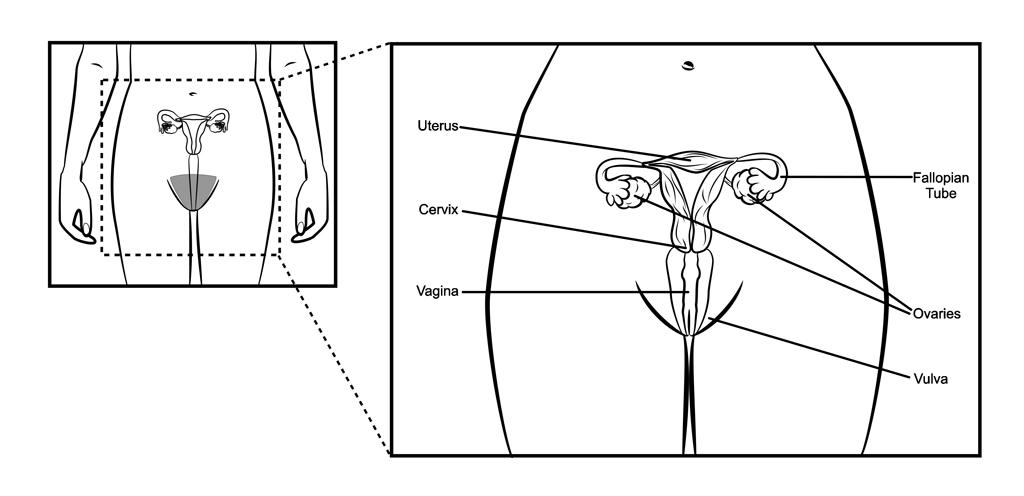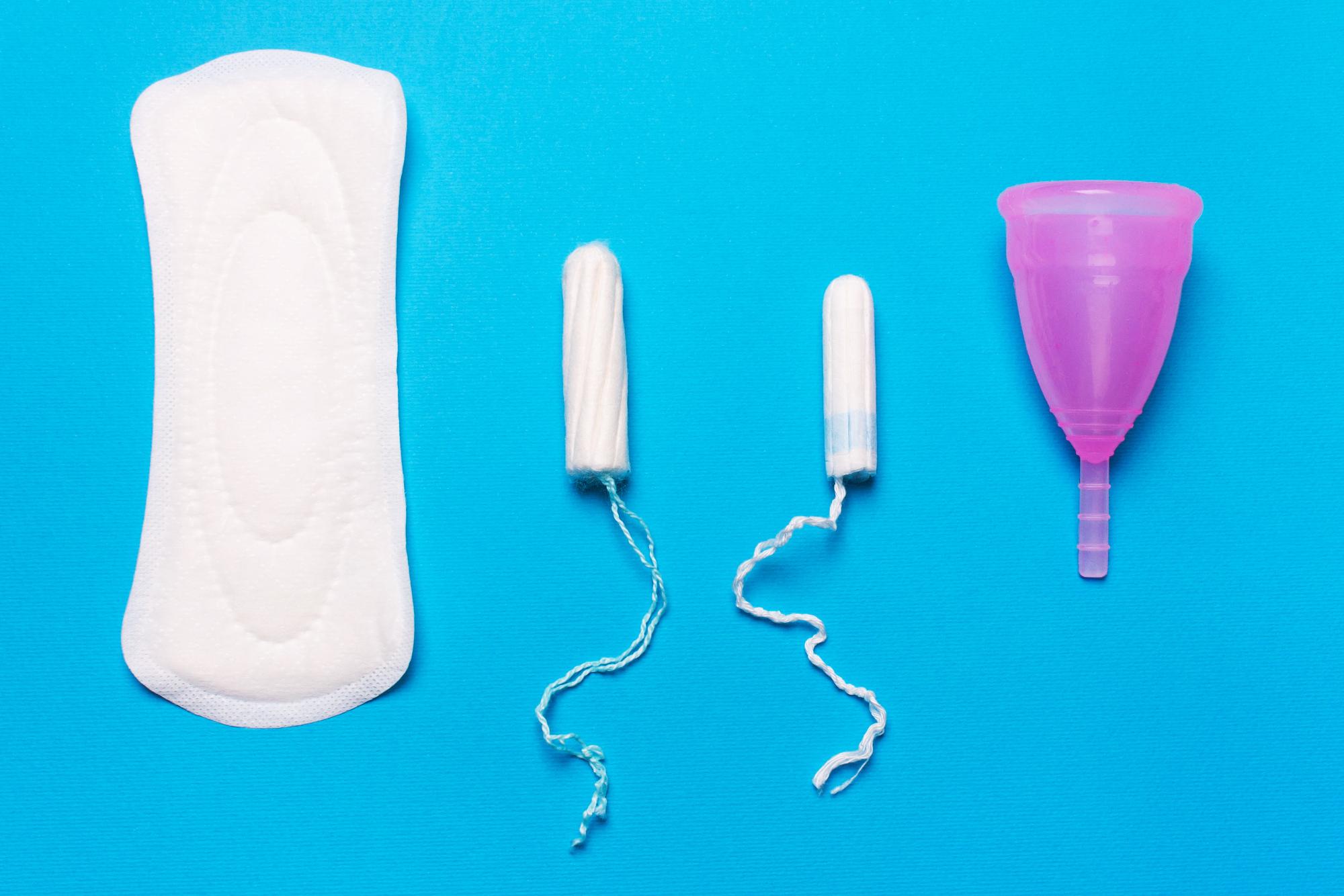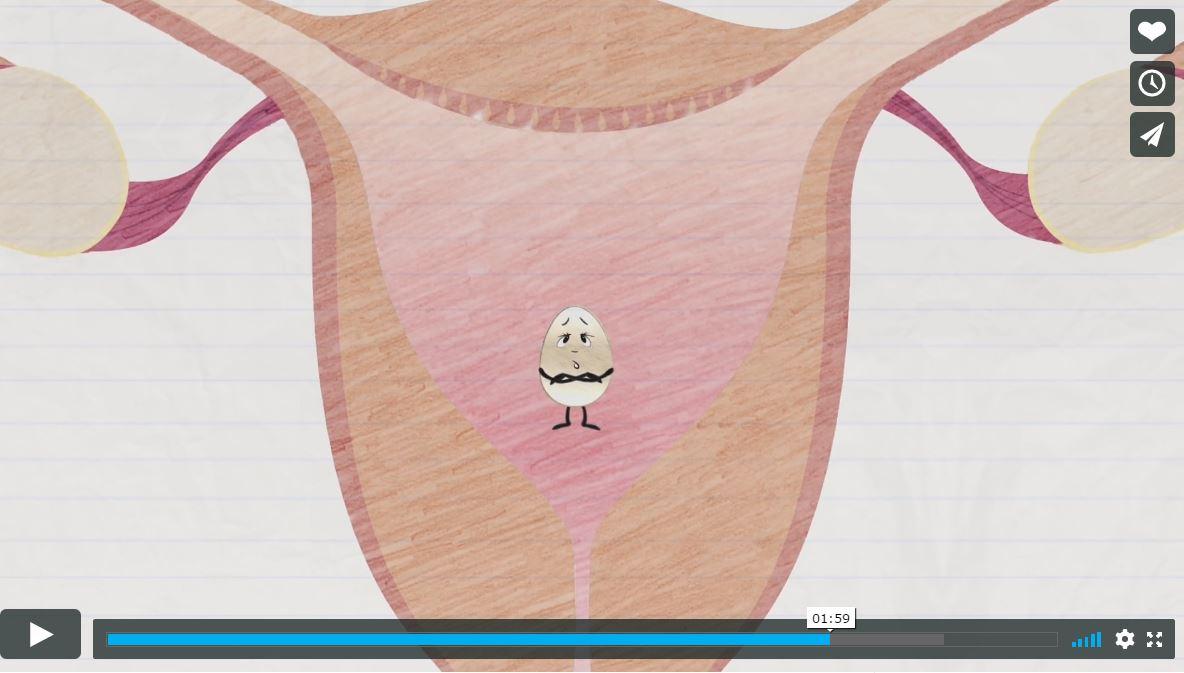
The menstrual cycle is a cycle of bodily changes controlled by a complex relationship between hormones from the brain and ovaries. This cycle causes a ‘bleed’ or period (menstruation) which usually occurs about once a month. The length of the cycle can vary from person to person and also month to month; it is commonly 24-36 days.
The two ovaries contain about 1-2 million eggs each at birth. During the menstrual cycle, the lining of the uterus thickens, making it soft and spongy, as it prepares itself for a possible pregnancy. At the same time, eggs in the ovaries start to ripen and the cervix produces mucus that becomes more clear and slippery. This ‘fertile mucus’ nourishes sperm and helps them move towards the egg.
Once a month, an egg will emerge out of one of the ovaries (ovulation) and begin to travel down the fallopian tube towards the uterus. The egg only lives for up to 24 hours. If the egg is not fertilised by a sperm, there can be no pregnancy. The mucus produced by the cervix becomes thicker, whiter and stickier (‘infertile mucus’) which makes it harder for sperm to penetrate. About 10-14 days after ovulation, the thick lining of the uterus breaks down and is shed through the vagina. This is called menstruation (a period). The first day of a period is the start (day 1) of a new menstrual cycle. Bleeding usually lasts 3-7 days and approximately 4-12 tablespoons of blood will be passed. The blood can vary in colour from red, to brown or black, particularly towards the end of the period. There may also be small clots of blood that are passed.
If a fertilised egg implants into the uterus and a pregnancy begins, the uterus lining will remain and no period (menstruation) will occur.
Menstrual cycle video (external link) - animated video suitable for all ages 2min 36sec

Female reproductive system illustrations
When does menstruation begin and end?
The menstrual cycle begins at menarche (the first period) and ends with menopause (the final period). The first period usually starts at around 12 or 13 years but can start as young as 8 or 9 years and as late as 16 years. Menopause usually occurs between the ages of 45 and 55 years.
Differences in menstrual cycles
The menstrual cycle is different for every person and can vary greatly in the following ways:
- age of onset and cessation
- amount of blood loss
- duration of flow
- amount of discomfort
- length of cycle
- mood change
- physical symptoms.
A doctor should be consulted if:
- periods have not started by 16 years of age
- bleeding occurs between periods
- periods are very heavy or large blood clots (about the size of a 50c coin) are passed
- the period lasts longer than 8 days
- period pain prevents participation in daily activities like school, sport or work
- despite personal cleanliness there remains a persistent unpleasant odour
- a period is ‘missed’ after sexual activity.
Managing periods
What can be used:
Pads
- pads that stick to the inside of underwear to soak up the blood
- come in many different shapes and types of absorbency (the amount of blood they can soak up)
- are thrown away after use (in a bin or sanitary disposal unit, not flushed down the toilet)
- can be purchased from supermarkets, chemists, petrol stations and online.
Reusable pads
- cloth pads that sit inside underwear (and may have press studs to help keep them in place)
- are rinsed, soaked overnight and washed so that they can be re-used
- can be purchased online.
Tampons
- tampons are tightly packed pieces of cotton that have a string on one end.
- tampons are put into the vagina to soak up the blood and the string is used to pull them out.
- available in a range of sizes to absorb different amounts of blood.
- if inserted correctly they can't be felt and they will not fall out
- they should be changed every 4-6 hours, or as needed
- tampons and pads can be used at the same time for heavier flow days, if needed
- tampons are thrown away after use (in a bin or sanitary disposal unit, not flushed down the toilet)
Menstrual cup
- small soft rubber cups that are put into the vagina to catch the blood flow
- need to be emptied and rinsed every 8-12 hours before putting back in
- need to be sterilised (e.g. using boiling water) at the end of period before storing ready for next month.
Period underwear
- look and feel like regular underwear but are have a special absorbent section that soaks up the blood (like a pad).
- are washed and re-used
- can be used at the same time as tampons for heavier flow days
- period swimwear is also available
Hygiene
When blood comes in contact with air, an unpleasant odour may develop. Daily showers, clean briefs and frequent changing of the pad or period underwear should prevent this.
The vulva (outside parts of the female genitals) should be washed with warm water. Clean around the labia (lips), clitoris and vaginal opening but not inside the vagina as the vagina is self cleaning. Soap, body wash and other skin cleaning products are not necessary, but if they are used they should be mild and unscented to prevent allergy and dry skin which can lead to irritation.
Vaginal deodorants and douches should be discouraged as they can irritate the vagina and cause infections.

Symptoms
The changes in hormone levels in the body can cause different symptoms such as:
- cramps
- headaches
- sore breasts
- diarrhoea
- bloating
- pimples
- cravings
- tiredness
Managing period symptoms:
- gentle exercise may help with cramps
- heat pads (wheat or hot water bottle)
- pain medication like ibuprofen, paracetamol or aspirin
- avoid smoking, drinking alcohol and taking other mood altering drugs
- talking to a health professional
External resources
NB: It is essential that teachers preview videos and texts to assess suitability for their students (in accordance with Department of Education policy).
Jean Hailes (external site)
- Menstrual cycle video (animation suitable for all ages - 2min 36sec)
- My period - what's normal? Factsheet
- Period pain and symptom diary
Tampons
- How to put a tampon in for a first time (external site) - video 9min 01sec
- Is my tampon in right? (external site) - video 1min 52sec
- How to put a tampon in (external site) - video 2min 24sec
Menstrual cups
- how a menstrual cup works (external site) - video 5min 31sec
Period underwear
- example of period underwear and how it works (external site) - video 0min 28sec
- the pros and cons of period underwear (external site)
The sustainable period project
- Free resources including a free resource kits with samples of cloth pads, menstrual cups, period pants, etc.
Reducing period stigma
- Libra - Blood normal (external site) - video 2min 22sec (NB: Video contains sexual references)




